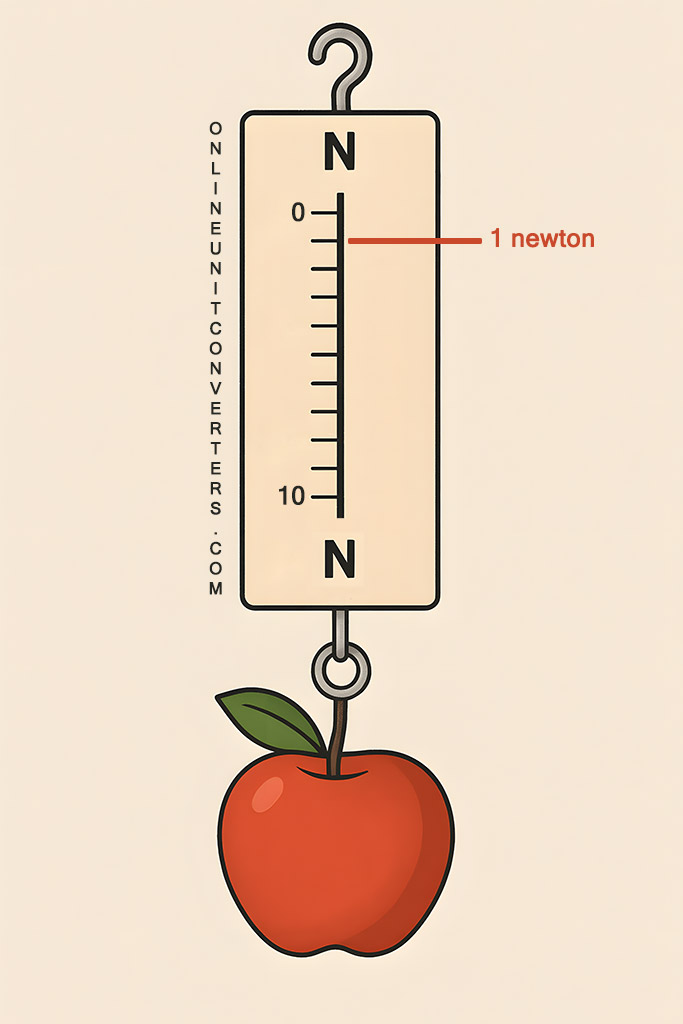Newtons explained
A newton is the International System of Units (SI) derived unit for force. It is defined as the force required to accelerate a mass of one kilogram by one meter per second squared. Named after Sir Isaac Newton, this unit plays a vital role in physics and engineering, particularly in understanding motion and mechanics.
Symbol
The symbol for the newton is N. It is always written with an uppercase "N" to honor Sir Isaac Newton.
Standardized Unit System
The newton is part of the SI system, which standardizes units for scientific and practical use globally. Below is a table of related units of force within the SI system:
| Unit | Symbol | Description |
|---|---|---|
| Kilonewton | kN | 1,000 newtons |
| Newton (Base Unit) | N | The force needed to accelerate 1 kg by 1 m/s² |
| Millinewton | mN | 0.001 newtons |
Applications of the Newton Unit
The newton is widely used in various fields such as physics, engineering, and everyday applications like measuring forces in structures or machinery. Common uses include:
- Calculating gravitational forces on objects.
- Designing mechanical systems like bridges and vehicles.
- Analyzing motion in physics experiments.
Tools to Measure Force in Newtons
Force can be measured using tools like:
- Dynamometers: Instruments that directly measure force in newtons.
- Force sensors: Electronic devices often used in industrial applications.
- Spring scales: Simple tools calibrated to provide readings in newtons.
Below illustration shows a spring scale in newtons. Also known as a newton meter, this instrument uses a spring to measure weight (as an effect of gravity on mass) and quantifies it in newtons. An average apple weighs approximately 1 newton.

Origin of the Newton Unit
The unit "newton" was named after Sir Isaac Newton, a pioneering physicist and mathematician whose work laid the foundation for classical mechanics. His second law of motion, F = ma, directly relates force to mass and acceleration. The unit was officially adopted in 1948 by the General Conference on Weights and Measures.
FAQs
Q1: What force, in newtons, is needed to lift an average apple off the ground?
The force required to lift an average apple is about 1 newton, which is the same amount of force a person would need to exert to overcome Earth's gravity and lift it off the ground!
Q2: Why is the symbol for newton written as "N"?
The uppercase "N" follows SI conventions for units named after individuals, ensuring consistency across scientific disciplines.
Q3: Can force be negative?
Yes, force can be negative when it acts in the opposite direction of a chosen reference or coordinate system, such as friction opposing motion.
How do I convert newtons to other force units?
Use the links below for easy conversions from newtons to other force units available on this website.
- Newtons to kilonewtons
- Newtons to dynes
- Newtons to kilograms-force
- Newtons to grams-force
- Newtons to pounds-force
- Newtons to ounces-force
- Newtons to joules per meter
- Newtons to kilojoules per meter
- Newtons to joules per centimeter
- Newtons to poundals
- Newtons to ponds
- Newtons to kiloponds
- Newtons to tons-force (metric)
- Newtons to tons-force (short)
- Newtons to tons-force (long)
- Newtons to kips-force
- Newtons to kilopounds-force
- Newtons to quettanewtons
- Newtons to ronnanewtons
- Newtons to yottanewtons
- Newtons to zettanewtons
- Newtons to exanewtons
- Newtons to petanewtons
- Newtons to teranewtons
- Newtons to giganewtons
- Newtons to meganewtons
- Newtons to hectonewtons
- Newtons to dekanewtons
- Newtons to decinewtons
- Newtons to centinewtons
- Newtons to millinewtons
- Newtons to micronewtons
- Newtons to nanonewtons
- Newtons to piconewtons
- Newtons to femtonewtons
- Newtons to attonewtons
- Newtons to zeptonewtons
- Newtons to yoctonewtons
- Newtons to rontonewtons
- Newtons to quectonewtons





